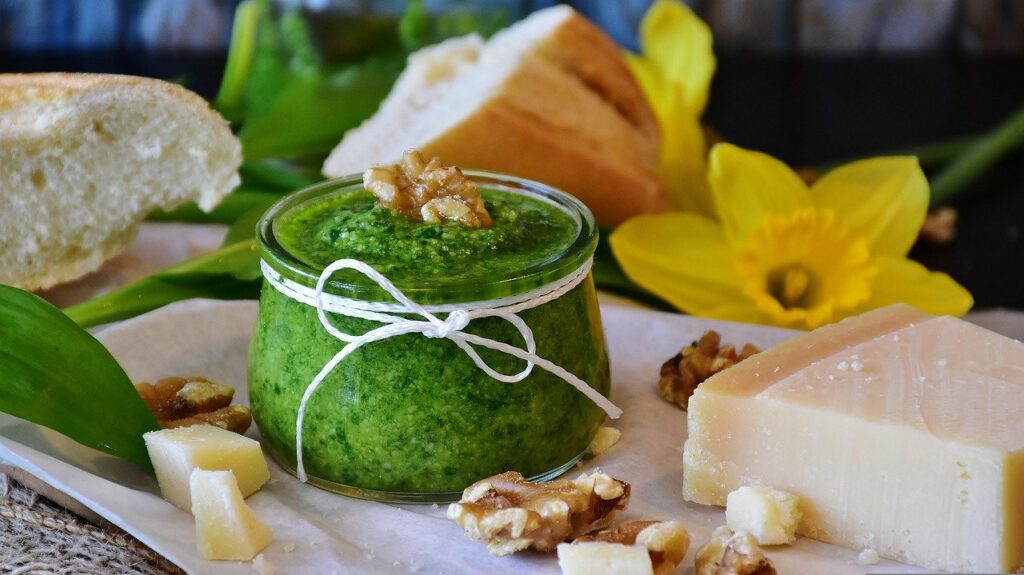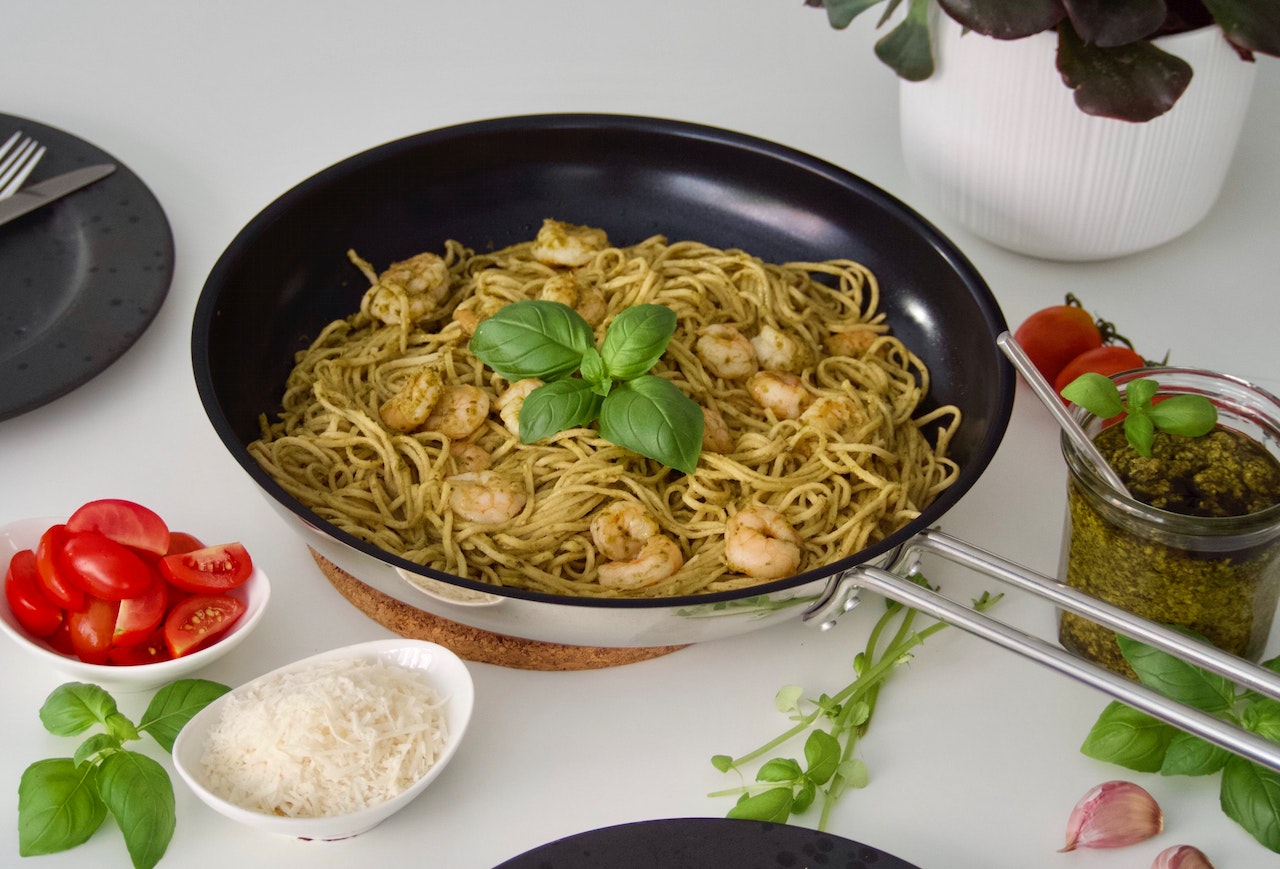There are few things more satisfying than pesto pasta if you know how much pesto per pound of pasta to use. It’s quick and easy to turn plain pasta into a meal with a jar or two of pesto. Not only does it bring forth the classic flavors of Italian cuisine, but it’s also incredibly delicious.
This article discusses the finer details of pesto pasta and the ideal amount of pesto to use in the dish.
What Is Pesto?
Traditional pesto is a basil-based sauce, often paired with pasta. Other ingredients include garlic, olive oil, parmesan cheese, and pine nuts. This Italian sauce is said to have originated in Genoa. But pesto can be found in most stores globally.

The word “pesto” is Italian for “pounded” because the ingredients are usually crushed together using a pestle and mortar. These days, most people use a food processor or blender to make pesto from scratch.
While it is usually made with basil, other greens such as arugula or spinach can also be used. And some people incorporate different types of nuts.
Pesto is a versatile sauce used in many different foods, including pasta, pizza, chicken, fish, and vegetables.
What Is Pesto Pasta?
Pesto pasta is a dish that consists of pasta tossed in pesto sauce. This dish first became popular in the Italian region of Liguria. And it is now one of the most popular dishes in Italian cuisine worldwide.
This classic dish can be served as a main course or a side dish, and it pairs well with various types of meat and vegetables. But many are unsure how much pesto per pound of pasta will produce the best results.
How Much Pesto Per Pound Of Pasta?
Pasta is a blank canvas, perfect for showcasing the complex earthy, nutty, garlicky, and cheesy pesto flavors. But if you’re looking to make classic pesto pasta, how much pesto per pound of pasta should you add?
The answer, of course, is dictated by what you prefer. Perhaps you’re partial to incredibly saucy pasta, in which case you’ll want to add more pesto. But if you prefer a lighter sauce coating, you’ll need less.
Using about 50 grams of pesto per 75g of uncooked pasta is a good starting point. Therefore, we recommend using approximately 300 grams of pesto per pound of uncooked pasta.
But you can adjust this amount, depending on your taste. However, remember that the kind of pasta you choose will have an effect on the amount of sauce needed.
For example, long noodles like spaghetti require more sauce than pasta tubes like penne. So, when in doubt, we recommend adding a little extra pesto to be safe.

Adding pasta water to your pesto sauce before mixing it with the pasta can ensure that it clings to the pasta better. The starch in the pasta water will act as a thickening agent for your pesto.
Start with two tablespoons of pasta water and keep an eye on the consistency of the sauce and adjust as needed. Should the sauce be too thick, incorporate a bit more water and include a drizzle of olive oil. If it’s too thin, add some more pasta water.
When you’re happy with your pesto sauce’s consistency, stir it into your hot, cooked pasta and enjoy.
Conclusion
While you can make your own pesto, most people purchase it ready-made from the store. What makes it a fantastic pasta sauce is that you don’t need to cook or heat it up. And it delivers a symphony of delicious flavors from its many varied ingredients.
Therefore, the fact that pesto pasta is a favorite globally is understandable. But if you’re unsure how much pesto per pound of pasta to use, we recommend roughly 300 grams.
